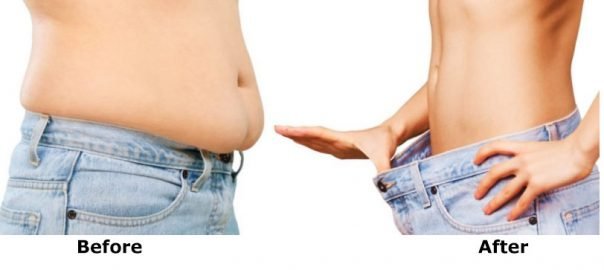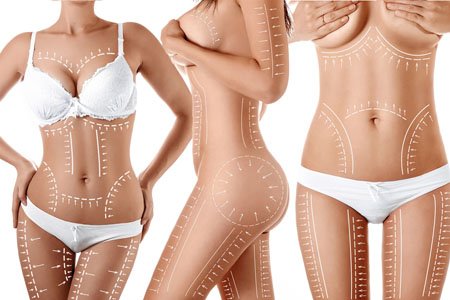A scar is a mark left after a wound has closed. Scar correction surgery can help improve the appearance of a scar or make it less visible. You can make it thinner or less elevated. If the scar is tight and limits skin movement, correction surgery can lessen the problem. No scar can be completely erased. But scar revision in Delhi can improve your appearance and reduce the discomfort it causes.
Types of surgery
Scar revision surgery can be done in different ways. The method used will depend on the type of scar you have and where it is on your body. You and your plastic surgeon in Panipat will discuss these details before surgery. Some frequently used methods for scar correction surgery:
- Cleavage. The scar is surgically removed and the area is closed with stitches.
- Skin graft. Scar tissue is removed. It is then replaced with a patch of healthy skin (graft) that is taken from another part of the body.
- Z-plasty: A Z- shaped incision is made through the scar tissue and a piece of healthy skin. (If the scar is very large, more than one incision may be made.) The Z shape creates pointed flaps of skin that can then be repositioned to produce a more aesthetic look and contour. It can also loosen the scar.
Preparations for surgery
Prepare for surgery as directed. What’s more:
- Tell your plastic surgeon in Karnal about all the medicines you use. This includes herbal remedies and other supplements. It also includes any blood thinners, some anti-inflammatory drugs, or daily aspirin. You may need to stop using some (or all) of these medications before surgery.
- If you smoke, stop before surgery. Tobacco and other nicotine products can slow wound healing.
- Do not eat or drink anything before surgery as directed.
The day of surgery
Before the scar revision surgery, you will be asked to sign an informed consent form. This form contains information about the procedure. It also mentions the risks and benefits, as well as the alternatives to the procedure. You will be able to ask any questions you have before signing it. Make sure to evacuate all your doubts before signing it.
The surgery takes 2 to 4 hours. Maybe you can go home the same day. Or you may need to spend 1 or more nights in the hospital or an ambulatory surgical center.
Before the surgery begins
- An IV will be put into a vein in your arm or hand. They will give you fluids and medications around here.
- You will be given medicine (anesthesia) so that you will not feel any pain during the surgery. You may be given a sedative to relax you and make you sleepy. Local anesthesia is also given to numb the surgery area. In some cases, general anesthesia is given. In this case, you will be sound asleep during the entire procedure. If you are given general anesthesia, a tube may be inserted into your throat to help you breathe. The anesthetist will explain your options to you.
During surgery
- Your plastic surgeon in Delhi will correct your scar using the method mentioned before surgery.
- You will be taken to a recovery room until you wake up from anesthesia. You may feel sleepy or nauseous. If you had a breathing tube, you may have a sore throat at first. They will give you medicine to control pain. If the correction was done in a large area, you may have to stay in the hospital one or more nights. When you are ready to go home, ask a family member or adult friend to drive you.
Recovery at home
Once you are home, follow the instructions you have been given. Your plastic surgeon will tell you when you can resume your normal activities. How to facilitate your recovery:
- Take all the medications that have been prescribed for you exactly as directed.
- If your plastic surgeon recommends it, use an ice pack wrapped in a thin towel to relieve discomfort and control swelling. It is important not to leave the cold pack on too long or put it on unwrapped. It could damage your skin. Put the compress on the dressings for up to 10 minutes at a time. Then take it off for at least 20 minutes. Repeat this procedure as often as needed during your waking hours until the swelling begins to subside. Don’t fall asleep with the cold pack on. If you don’t know how to use the cold pack properly, ask your healthcare provider.
- Follow all instructions given to you by your healthcare provider regarding incision care. Leave the dressing on until you are told it can be removed or changed. Once the dressing can be changed, change it every 24 hours or as often as directed. Also, replace it also if it gets wet or dirty. Wash your hands before changing the dressing.
- Keep the surgical area clean and dry. You can let it get wet after 48 hours. Rinse the surgical site gently and pat it dry.
- Keep it out of sunlight while it heals. This will help you get a better result. At first, cover the healing skin with a dressing or clothing. When your plastic surgeon gives you permission, you can apply sunscreen to the area.
When to call your doctor
Call your plastic surgeon in any of the following cases:
- Chest pain or trouble breathing.
- A fever of 100.4 ° F ( 38 ° C) or higher, or as directed by your healthcare provider.
- Signs of infection at one of the incision sites, such as increased redness or swelling, a feeling of heat, worsening pain, or a foul-smelling discharge.
- Clear bleeding or drainage from the wound that does not stop when pressure is applied to the area. First, change the dressing to a clean, dry one or gauze. Apply pressure directly to the incision for a few minutes. If the bleeding or drainage continues, call your doctor.
- Pain that is not relieved by medicine.
Control visits
You will have follow-up visits with your plastic surgeon to see how you are healing. During these visits, the provider will evaluate the results of your surgery. Consult your doctor if you have any questions or concerns.
Risks and possible complications
Some of the risks and possible complications:
- Bleeding
- Infections
- Formation of blood clots that can travel to the lungs, heart, or brain.
- Damage to nerves, muscles, or blood vessels.
- Changes in skin sensitivity.
- Abnormal pigmentation of the skin.
- Dissatisfaction with the appearance of the corrected scar.
- Reappearance of a keloid scar.
- Risks of anesthesia. The anesthetist will discuss these risks with you.









